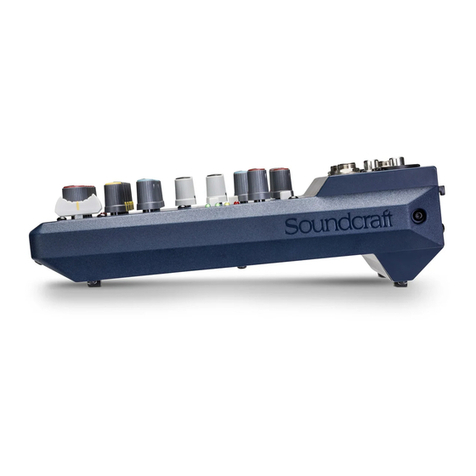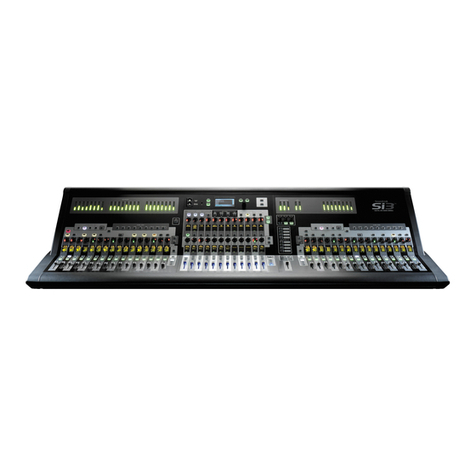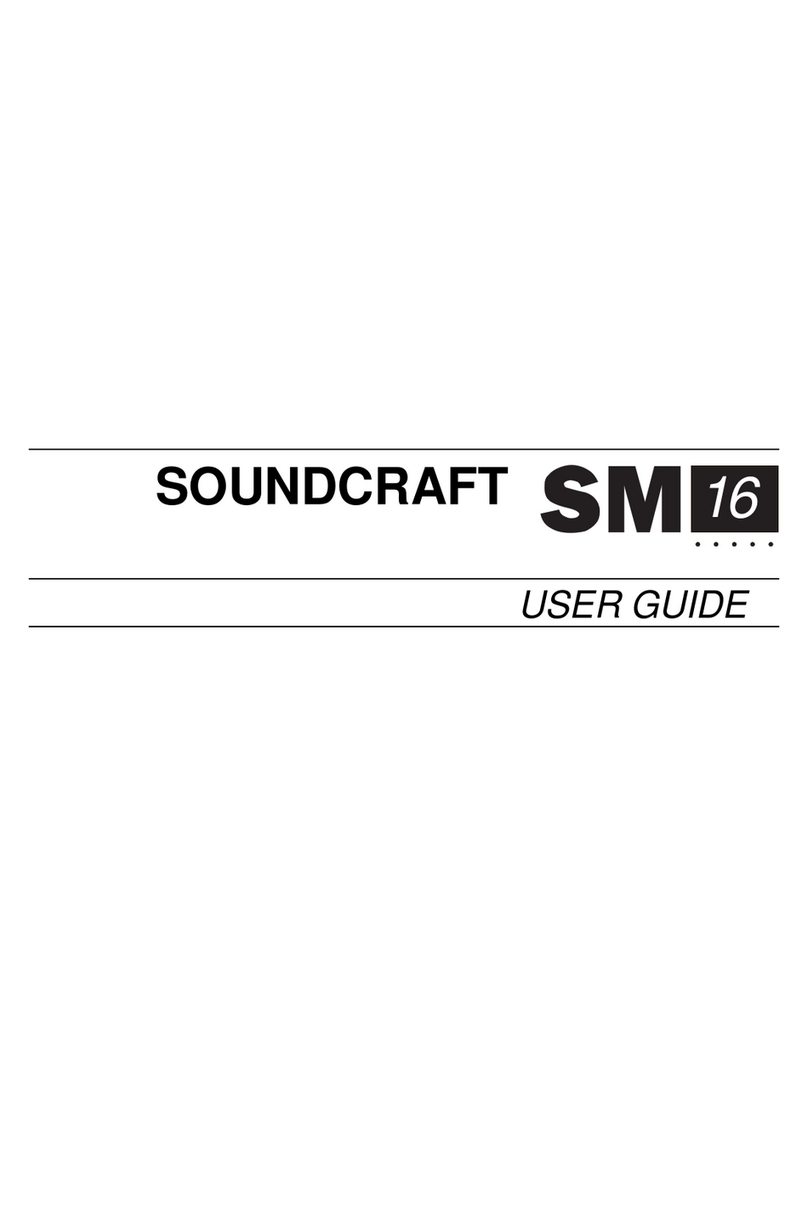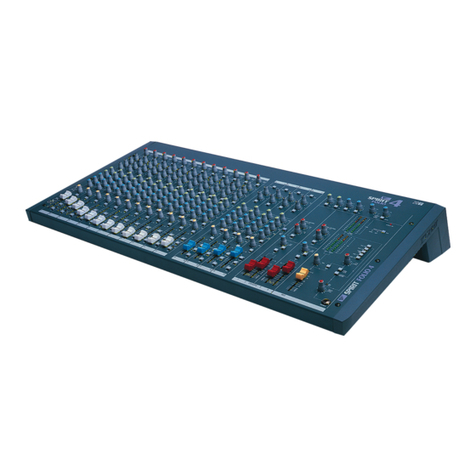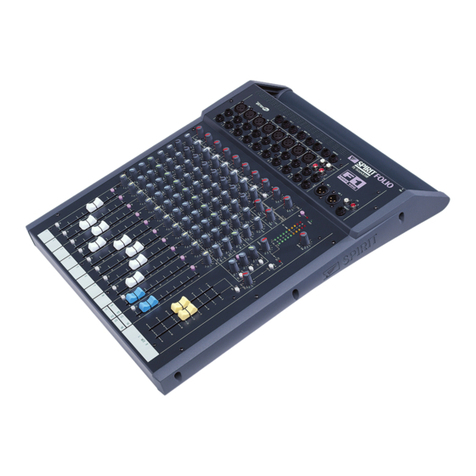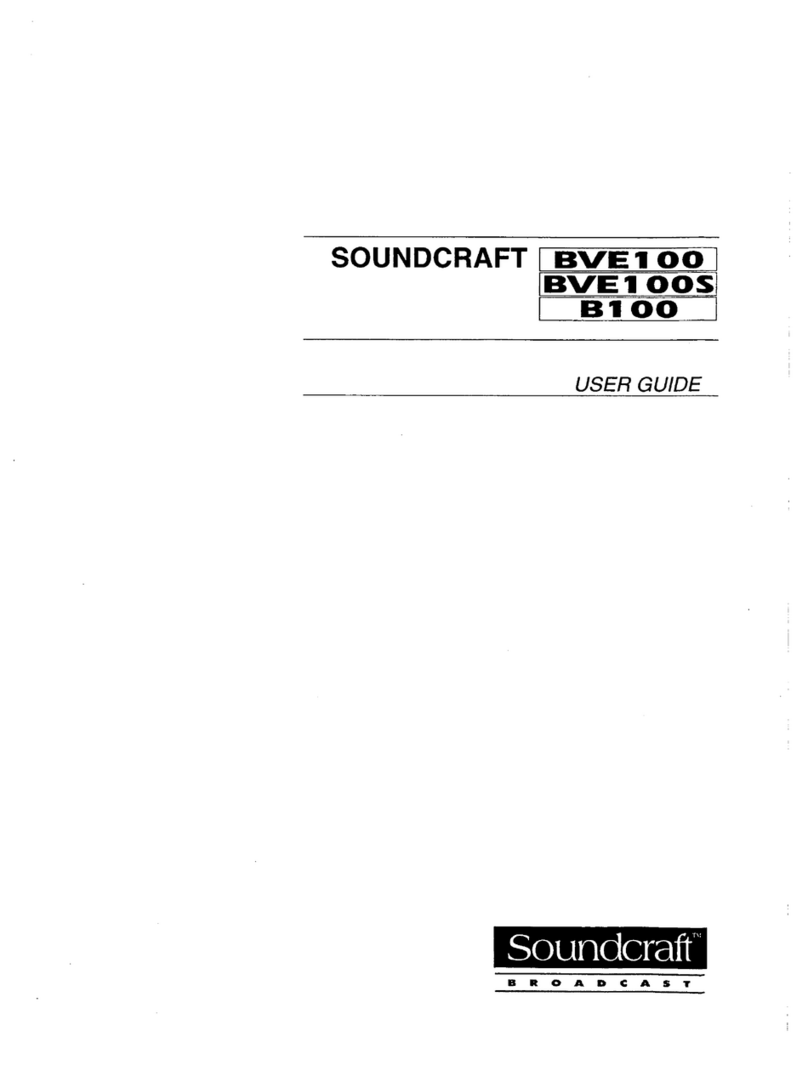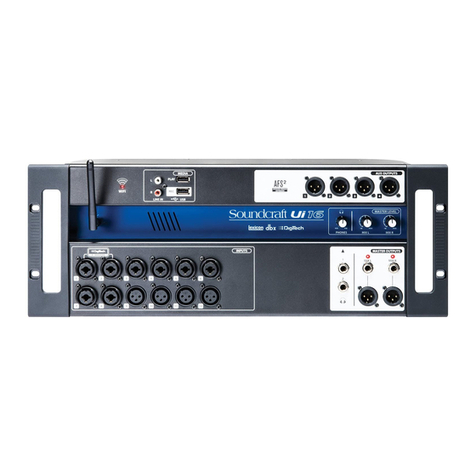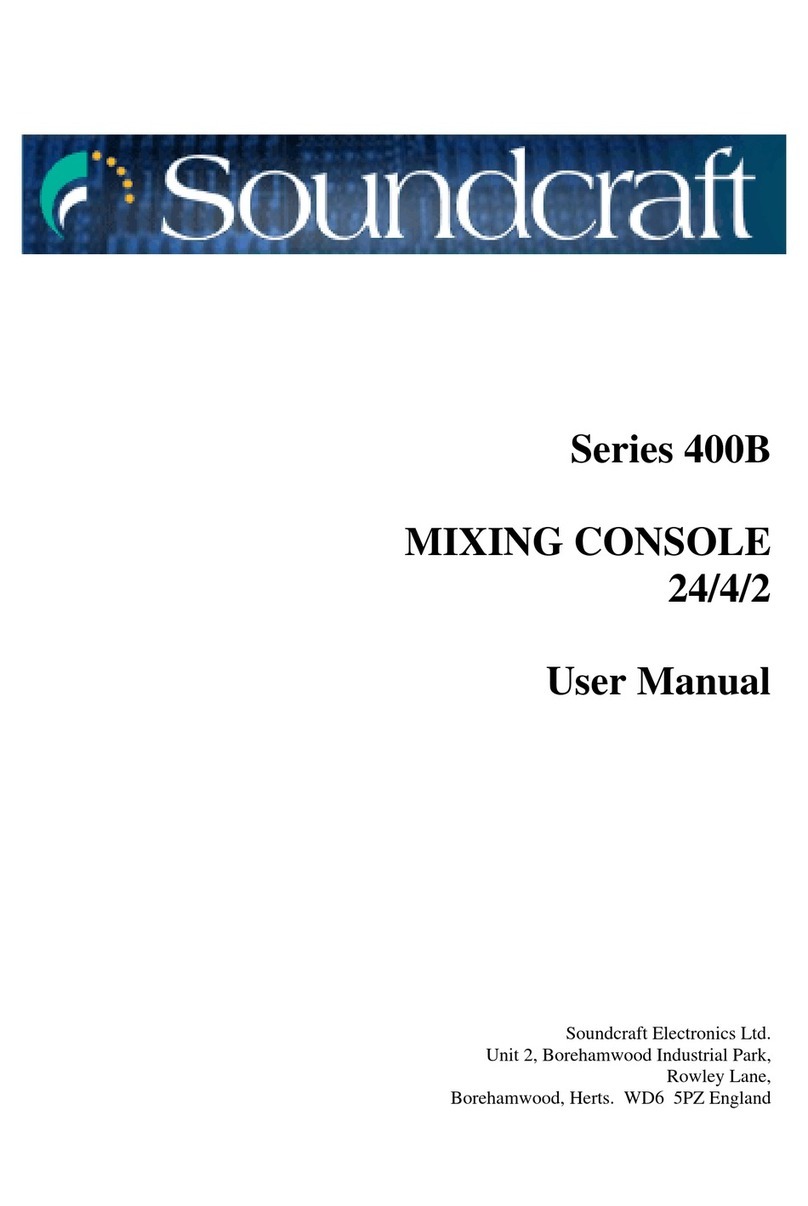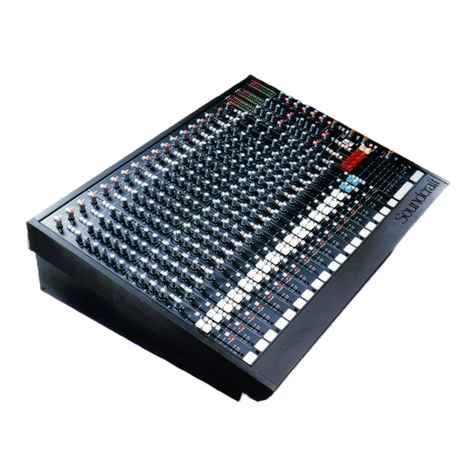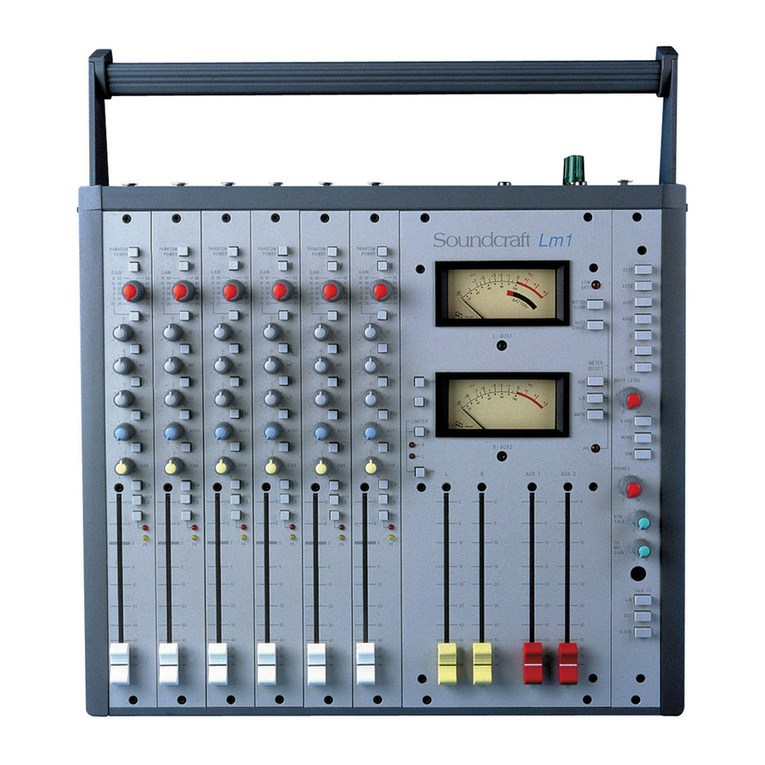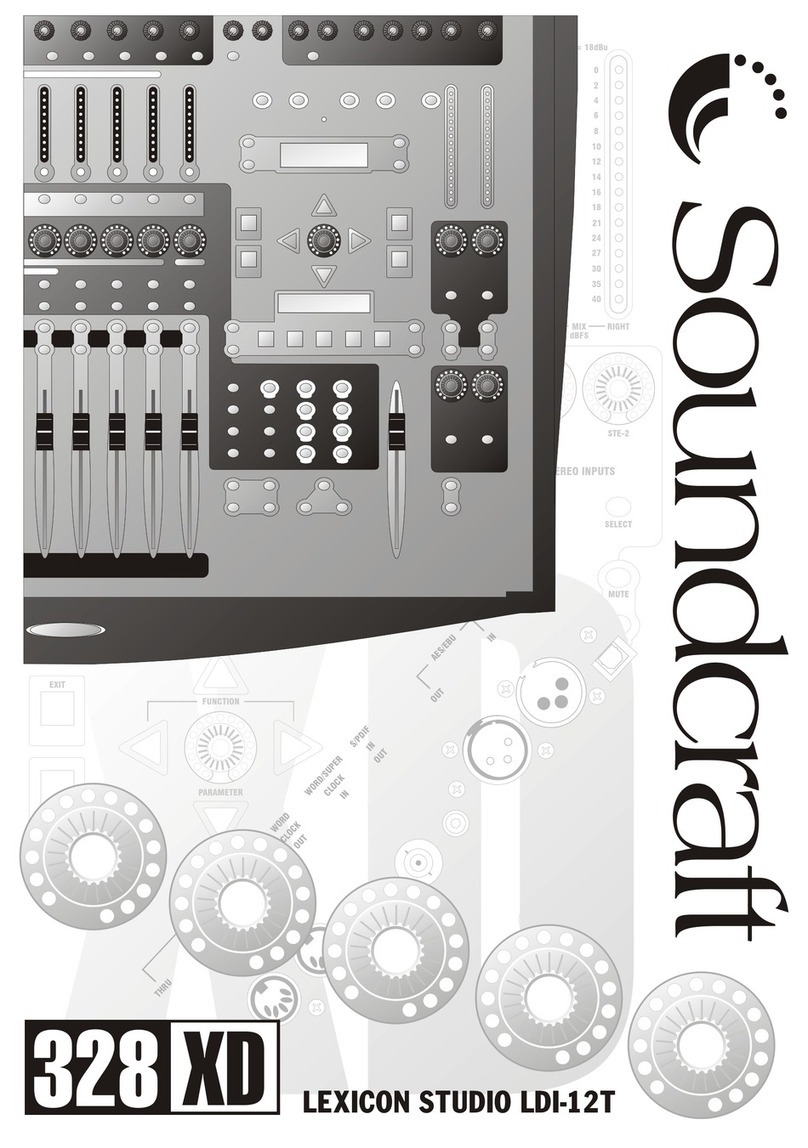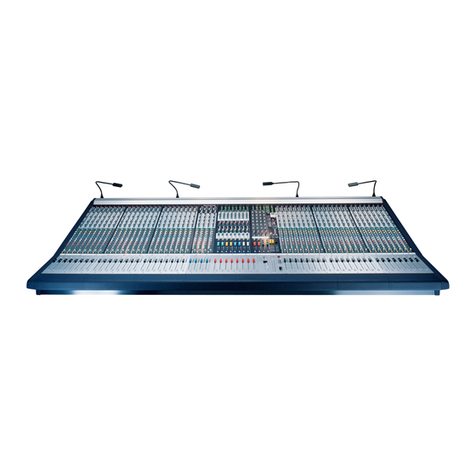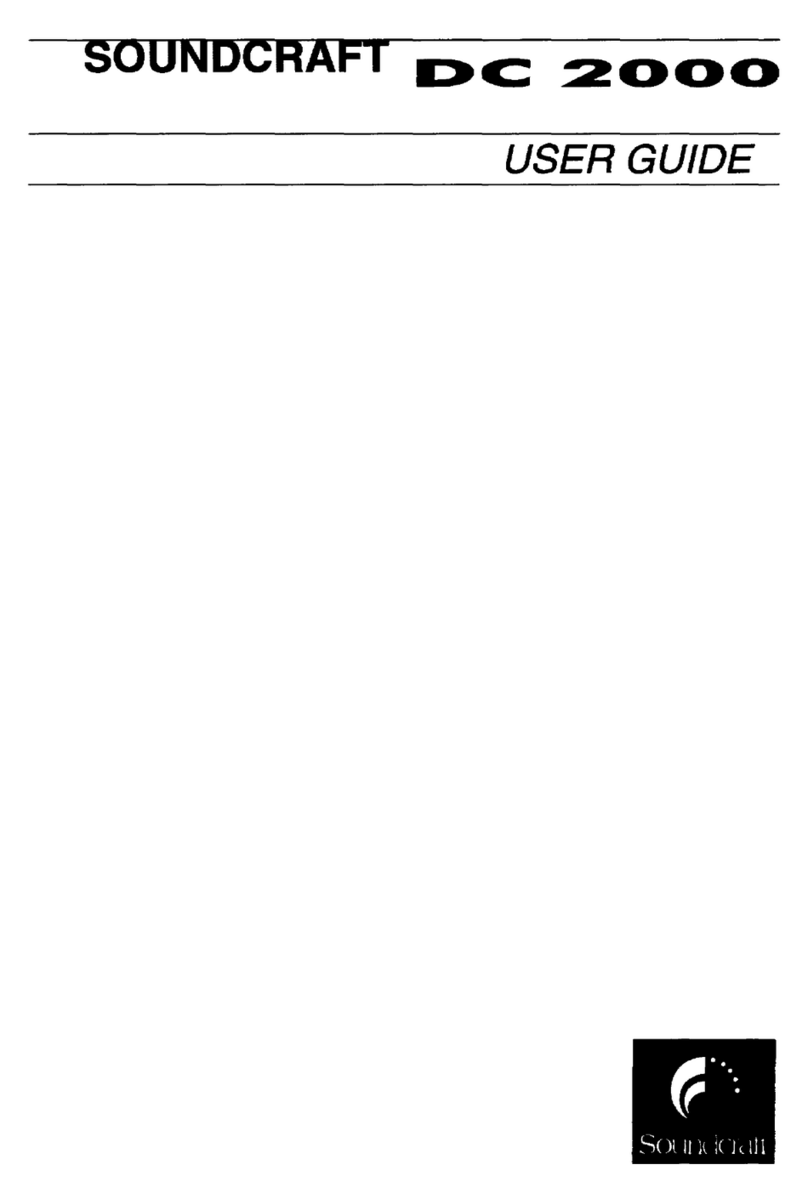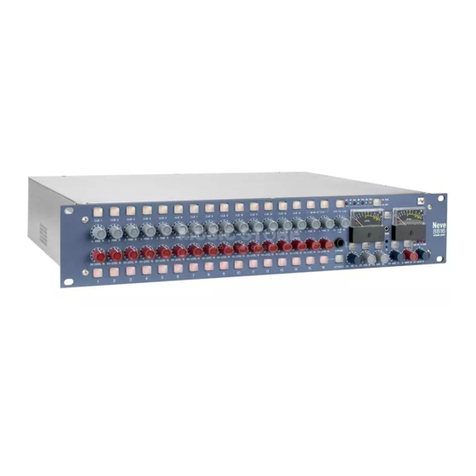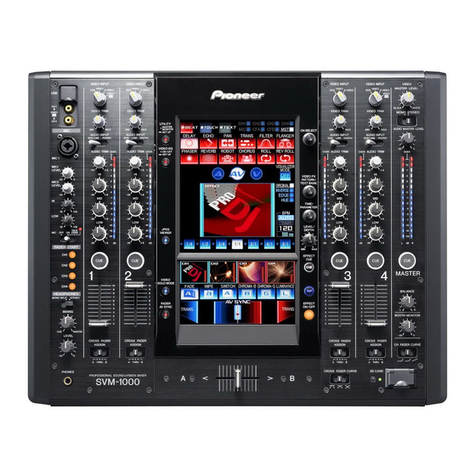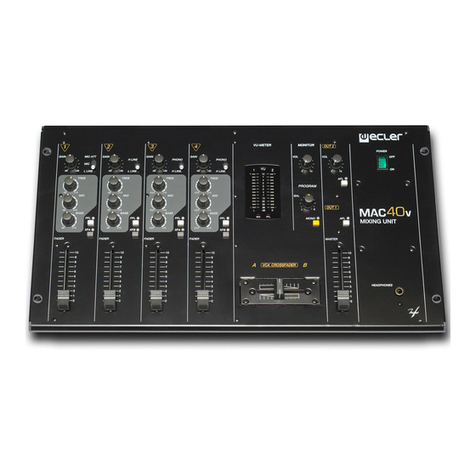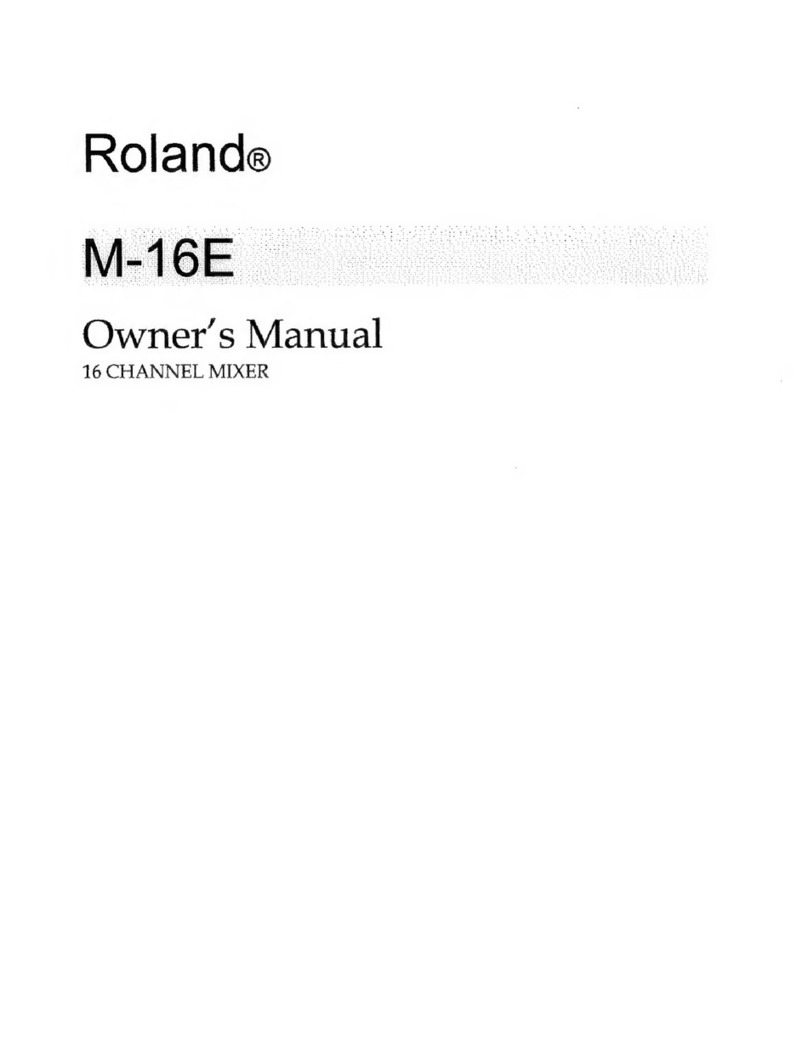9
5EQ STAGE Adjust these controls to change the signal tone
6AUX SENDS Adjust these controls to change the level of the signal to an FX unit or an artist’s monitors (head
phones/in-ear/stage monitors). Aux 1&2 are pre-fade, while Aux 3&4 are post-fade
7PAN CONTROL Use this control to position the signal within the stereo field
8MUTE SWITCH When this is pressed you will hear no signal from the channel
9PFL (PRE-FADE LISTEN) When pressed the signal will appear on the monitor outputs - use this to monitor the post eq
signal from the channel
0INPUT CHANNEL FADER This is used to control the level fed to the Mix Bus
qDIRECT OUTPUT This output can be used to send the channel signal to a recording device, such as a multi-track
(¼” Jack) recorder
wDIRECT PRE This switch controls the source for the direct output. When the switch is down the D/O is pre-fade,
and when the switch is up the D/O is post-fade
eMIX OUTPUTS (XLR) Connect these to your analogue recording device, or to your amplification system
rMIX INSERTS This is a pre-fade break in the signal path which can be used to feed a dynamics or mastering
(¼” Jack) device. The signal is sent from the tip of the jack plug and the return path comes back in on the
ring of the jack plug
tS/PDIF OUTPUT This is a digital version of the Mix Output and can be used to send any source or the entire mix to
a digital recorder or computer sequencer via the appropriate hardware
yMONITOR O/Ps These are used to feed your monitoring system. This can be directly to powered monitors, or
(¼” Jack) indirectly via an amplifier to standard monitors
uMASTER FADER This fader controls the overall level of the mix bus
iAUX MASTERS These controls can be used to adjust the overall level of a specific auxiliary send to an effects unit
oMAIN METERS These show the level of the mix outputs. When the PFL/AFL LED is lit, the meters show the level of
the signal sourced
pMONITOR CONTROL This controls the level of the signal sent to your monitoring system
aPHONES CONTROL This controls the level of the signal sent to the headphones jack socket
sMONO SUM CONTROL This controls the level of the signal sent to the mono sum output
dAUX OUTPUTS These four outputs can be used to send the channel signal to an FX unit or an artist’s monitors
(¼” Jack) (headphones/in-ear/stage monitors). Aux 1&2 are pre-fade, Aux 3&4 are post-fade
fSTEREO RETURN INPUTS These four inputs can be used to connect the return signal from an FX unit, or a stereo feed from
(RCA Phono) consumer devices such as CD-Players, Minidisc etc. The level of these inputs are controlled by the
RET1,2,3 & 4 controls and are sub-mixed via the returns master control before being sent to the
Mix Outputs
gSTEREO INPUTS These four inputs can be used to connect line level stereo inputs from keyboards, sound modules,
(¼” Jack) samplers, computer based audio cards etc. These inputs pass through a normal channel strip,
with EQ, Auxes and a Balance control
hPLAYBACK INPUT Here you can connect the playback from your recording device
(RCA Phono)
jPLAYBACK CONTROLS Use this to control the level of the playback signal. There is also a PFL/AFL switch and a PLAYBACK
REPLACES MIX switch
kRETURNS MASTER This controls the overall level of the stereo return inputs. There is also a MUTE switch so that you
can quickly compare your mix, with and without FX
lPHANTOM POWER Press this to switch the phantom power (48V) on for condenser microphones
WARNING: Do Not apply Phantom Power before connecting a microphone
;MIXER POWER LED This LED will light when the unit is switched on
zHEADPHONES (¼” Jack) Plug your headphones into this socket
xSIGNAL PRESENT LED This is used to indicate the presence of a signal on a specific channel
cPEAK LED This is used to indicate signal clipping on a specific channel
vMONO SUM OUTPUT This output provides a Mono sum of the main L & R mix outputs
b100Hz FILTER When pressed, this switch significantly reduces the level of frequencies below 100Hz
17
18
16
18
22
25
22
22
21
21
21
21
22
20
19
19
22
21
22
21
21
27
18
18
22
17
22
17
17
18
18

